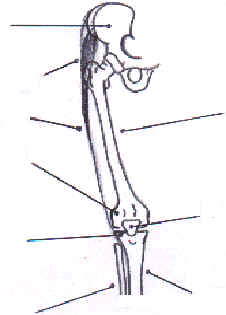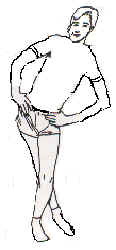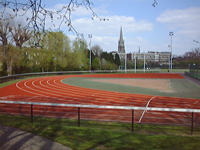Discounts for Serpentine Members - Running
ASICS Store London 29 Argyll Street Tel: 020 7494 4701 | The ASICS Flagship Store London off Oxford Street offers the most extensive collection of footwear and apparel, as well as advanced services and professional advice for runners. They offer a discount for Serpentine members on all apparel and footwear (non-sale items only). 10% off for Serpentine members on presentation of Serpentine membership card. |
Cardio Fitness
Tel: 020 8405 7968 | Cardio Fitness is an online running shoe shop. They also offer gait analysis by appointment in Purley, Surrey (see the Cardio Fitness website for details). 20% off to Serpentine members using the online code [[:code_cardio]]. |
Compression Advisory
Tel: 020 7326 0900 | Compression Advisory make compression socks, offering different products for use for exercise, recovery, during the day, travel and maternity. 20% discount to Serpentine members using the online code [[:code_compadv]]. |
Fitsense Sports | Fitsense Sports is an online sports shop specialising in triathlon, running and swimming products, including goggles, wetsuits, GPS and heart rate watches, clothing and accessories. 10% discount for Serpentine members when using the online code [[:code_fitsense]]. |
Foot Factor
3 Gower Street | Foot Factor is a medical sports unit specialising in feet and foot related injuries, and the making of orthotic footbeds. They make the assessment and the orthotics personally in the time of your appointment. Appointments last ~1.5hour after which you can run away with the orthotics. Recommendations from Serpentine members. 10% off for Serpentine members on presentation of your Serpentine membership card. |
Lanson Running
34 High Street | Lanson Running stock a full range of running shoes, clothing, accessories, and gadgets. They offer a free physio endorsed shoe fitting service in a friendly but professional environment. They are a Premium Newton Dealer, a certified Asics Running Expert and stock a good range of minimalist shoes. Visit their website to see the full range or to order online – it’s free and normally next day delivery on everything. Serpentine members are eligible for a 10% in-store Loyalty Card discount (on non-sale items) when they present their membership card |
London City Runner
10 Ludgate Broadway | Near St Paul's Cathedral and City Thameslink. Good selection of shoes and technical running gear. Discount of 10% for Serpentine members on presentation of membership card. |
Profeet
867 Fulham Road | Profeet are a highly qualified and friendly group of athletes, they measure your feet dynamically, using video imaging and an advanced version of Footscan. They will identify your exact foot type, motion, and themost appropriate shoe. A running specific insole is then moulded to your foot which replaces the manufacturer's version. The analysis will also identify other biomechanical dysfunction issues. Profeet, bringing the science of the sports lab to the high street. Comfort Guarantee and 10% off with your Serpentine card. |
Proviz
| Proviz sell some excellent high visibility clothing and accessories for running, cycling and for children. Discount of 10% discount for Serpentine members (in addition to any other discounts they are offering) when you use the Serpentine code [[:code_proviz]] at checkout. |
Run and Become
42 Palmer Street | A small, family-run shop on this pedestrian alley near Victoria. Good advice on running shoes, and a selection of other accessories. Probably the most patient staff, willing to help anyone from beginners to experienced athletes. Discount of 10% for Serpentine members on presentation of membership card (not valid on sale priced goods). |
RunBreeze
| RunBreeze was set up by two Serpies and offers fellow runners value running products using quality fabrics and designed for comfort to aid effortless movement. We are proud to say that our technical socks have gained great reviews in the running press. 20% discount for Serpentine members online using code [[:code_runbreeze]]. Free P&P on all orders over £10. |
Runners Need
London stores currently in: Camden, Check the website for addresses | Offers a wide range of shoes, clothing, accessories and friendly customer service to runners of all abilities. Free video gait analysis is offered with every shoe fitting. Runners Need also offers a price match guarantee so if you find the same product cheaper at another store or online, they’ll match the price. Discount of 10% for Serpentine members on presentation of membership card |
The Running School | We teach you how to run and then we teach you how to run Faster! The Running School provides the only service in the UK to assess your running and your movement, and then coach you to improve your efficiency and your speed. We specialise in running technique, speed development and injury prevention for recreational and elite athletes. Discount of 10%, or a free session when purchasing any running technique or performance coaching packages for Serpentine members on presentation of membership card. |
Running Shoes London
| What started as Apex Sports, a specialist running shop in Paddington, is now an online store. |
Sharman Ultra Coaching
| Ian provides one-on-one coaching for endurance runners based anywhere in the world, whether you're new to marathons/ultras or want to improve from your existing level of fitness. This is through one-on-one coaching with a training plan based on initial discussions and questions, and regular communication with Ian via Skype and email. The plan can be altered at any time to change your focus or goals. 5% discount to all Serpies (on top of the block booking discounts offered). |
Sheactive
| Sheactive are the UK's first one-stop shop for women's sports bras, sportswear, active wear and outdoor clothing. They aim to stock a varied range of sportswear for every type of female athlete, whether you are running a marathon, training with a local sports team, or have a passion for pilates. Or 10% off at the Sheactive website when you use the Serpentine code [[:code_sheactive]]. |
Skins
| Skins compression clothing. 15% off for Serpentine members - use [[:code_SRC15%]] to claim your discount. |
Suka Sport
47 Beak Street | Suka Sport is based on Beak Street, 2 minutes walk from Picadilly Circus & Oxford Circus. We offer a full range of run, cycle and triathlon clothing, including trainers and accessories. Additional services are gait analysis, yoga classes & nutrition. 10% off for Serpentine members on presentation of membership card. |
Sweatshop
Stores throughout London | Founded by Chris Brasher, who also founded the London Marathon. London stores are in Clapham, Fulham Broadway, Harbour Club, Harrods, Holloway Road, North Finchley, Rathbone Place (off Oxford St), Stratford (Westfield), Teddington and the City. Offers 10% discount to Serpentine members (except Harrods) on presentation of membership card. |
Thoosa
| Thoosa is a specialist on-line clothing brand for women runners. It’s performance kit with the elusive quality of being stylish. Designed by a fellow running lady, Thoosa is a small and friendly brand and their kit comes with a very high recommendation from Serpie Catherine Wilding. Each year they have a stand at the London Marathon Expo and so be sure to pay them a visit. 15% off and free delivery for Serpies. Just add the code [[:code_thoosa]] at the online checkout. |
UKGear | At UK Gear we build our performance footwear to be tough! That's why we develop our products in association with some of the most physically demanding people on the planet, the British Army Physical Training Corps. Serpentine members receive a 20% discount when using the code [[:code_ukgear]]. |
ULTRAmarathon Running Store | Specialist ultrarunning store with clothing, gear and equipment focussed on the specific needs and requirements of trail and ultramarathon runners that like to run long. Go further and faster on your long distance runs and ultra races! 10% discount for Serpentine members using code [[:code_ultra]]. |
Yew Clothing
| Yew Clothing make sports and outdoors clothing using sustainable materials. Technical tops, base layers and fleeces are made from recycled materials but designed to perform. Yew was co-founded by a Serpie and lots of members have helped with product development. 15% discount for Serpentine members using code [[:code_yew]]. |























 Treatment
Treatment Research has shown that if you have normal knees then long distance running does
Research has shown that if you have normal knees then long distance running does  Each meeting has a wide-ranging track programme covering distances from 100m to 3000m. The programme also includes two jumps and two throws and one hurdle race, these events varying from fixture to fixture.
Each meeting has a wide-ranging track programme covering distances from 100m to 3000m. The programme also includes two jumps and two throws and one hurdle race, these events varying from fixture to fixture. The coached sessions start at 6.50pm with a 15 minute warm-up. Ideally, you will also have jogged 4 times round the track before the group warm-up starts.
The coached sessions start at 6.50pm with a 15 minute warm-up. Ideally, you will also have jogged 4 times round the track before the group warm-up starts.